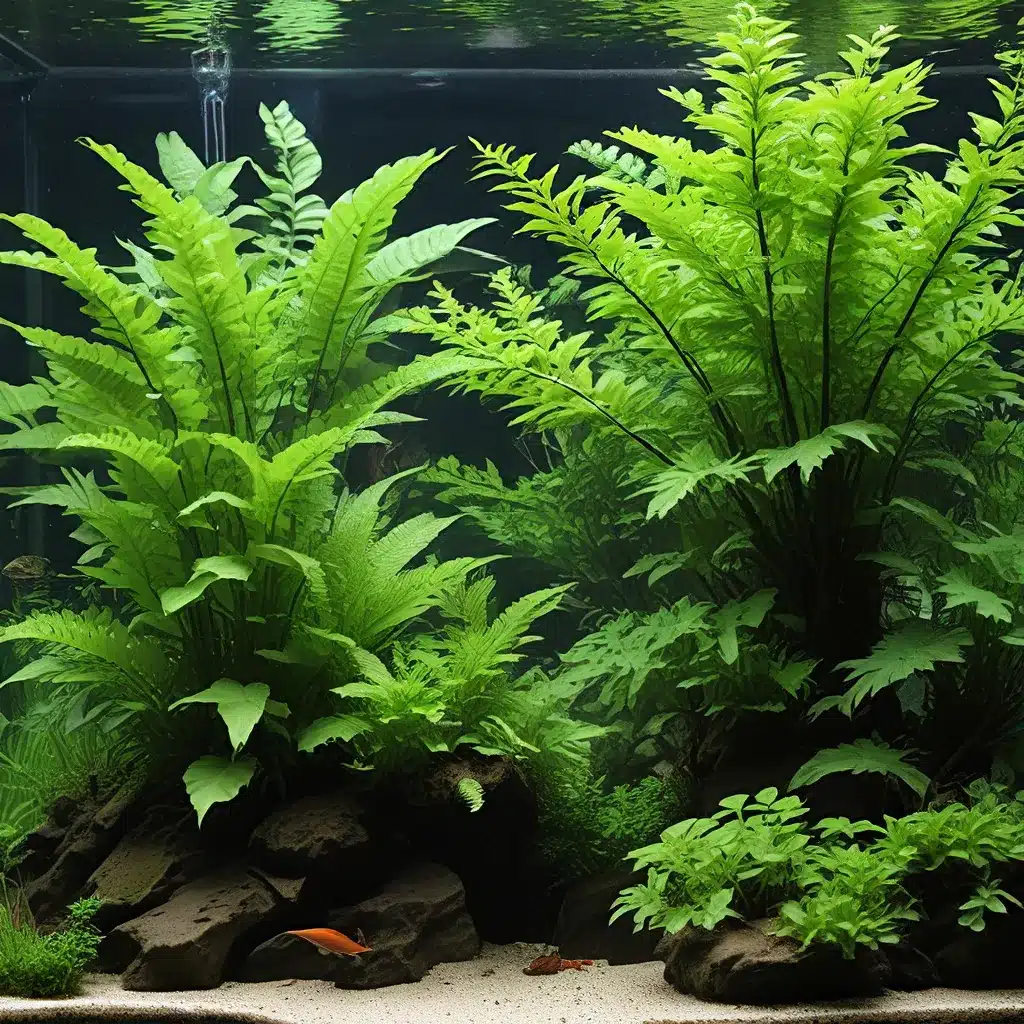
Navigating the Intricate World of Aquarium Plant Interactions
As passionate aquarium enthusiasts, we often find ourselves captivated by the diverse and vibrant world of aquatic plants. These living masterpieces not only enhance the aesthetic appeal of our underwater sanctuaries but also play a crucial role in maintaining the delicate balance of our aquatic ecosystems. However, the realm of aquarium plant compatibility can be a veritable minefield, with various species vying for dominance, resources, and ultimately, the coveted spot in our carefully curated aquascapes.
In this comprehensive guide, we’ll delve into the intricate dynamics of aquarium plant compatibility, equipping you with the knowledge and strategies to create thriving, harmonious aquatic environments. By understanding the unique needs and interactions of different plant species, you’ll be empowered to make informed decisions and overcome the challenges that often arise when attempting to house a diverse array of aquatic flora.
Exploring the Nuances of Plant Compatibility
Identifying Complementary Species
The first step in navigating the world of aquarium plant compatibility is to understand the unique characteristics and requirements of each species. Aquatic plants can vary significantly in their growth habits, light and nutrient needs, and competitive abilities. By carefully selecting species that are compatible with one another, you can create a harmonious and visually stunning aquarium.
For example, fast-growing, light-loving plants like Vallisneria and Hygrophila may thrive alongside slower-growing, lower-light-tolerant species like Anubias and Java Fern. Understanding these synergies and balancing the plant community can lead to a well-functioning, aesthetically pleasing aquarium.
Recognizing Competitive Interactions
While some plant species can coexist peacefully, others may engage in fierce competition for resources, ultimately leading to the demise of one or more species. Factors like light, nutrients, and space can all contribute to these competitive dynamics, shaping the overall health and appearance of your aquarium.
Certain fast-growing, aggressive plants, such as Cryptocoryne and Anacharis, may outcompete slower-growing or more delicate species, depriving them of essential resources. Careful plant selection and regular maintenance can help mitigate these competitive challenges and ensure the long-term stability of your aquarium ecosystem.
Strategies for Successful Aquarium Plant Compatibility
Tailoring Substrate and Lighting Conditions
One of the key factors in promoting plant compatibility is the careful consideration of substrate and lighting conditions. Different plant species have varying preferences for substrate composition, nutrient availability, and light intensity.
For instance, Cryptocoryne and Anubias may thrive in nutrient-rich substrates, while Dwarf Sagittaria and Java Moss may prefer more neutral or acidic substrates. By understanding the specific needs of your chosen plant species and tailoring your aquarium’s substrate and lighting accordingly, you can create an environment that supports the harmonious coexistence of your aquatic flora.
Incorporating Complementary Aquascaping Techniques
Aquascaping, the art of arranging aquatic plants, hardscapes, and other elements, can also play a pivotal role in fostering plant compatibility. By strategically positioning plants and utilizing techniques like layering, zoning, and focal points, you can minimize competition and enhance the overall aesthetic appeal of your aquarium.
For example, using taller, background plants to provide shading for more delicate, low-light species can help prevent aggressive overgrowth from faster-growing plants. Additionally, creating distinct zones or niches within the aquarium can accommodate the unique needs of different plant communities, promoting a thriving and diverse ecosystem.
Implementing Effective Maintenance Practices
Consistent and thoughtful maintenance is essential for maintaining plant compatibility in your aquarium. Regular pruning, nutrient management, and water quality monitoring can help mitigate the effects of competition and ensure the long-term health of your aquatic plants.
Pruning overgrown or aggressive plants can prevent them from dominating the aquarium, allowing other species to thrive. Maintaining optimal water parameters, such as pH, temperature, and nutrient levels, can also support the specific needs of your plant community, fostering a balanced and harmonious environment.
Embracing the Diversity of Aquarium Plants
Navigating the complexities of aquarium plant compatibility can be a rewarding challenge, but with the right knowledge and strategies, you can create thriving, visually stunning aquatic ecosystems. By understanding the unique characteristics and interactions of different plant species, tailoring your aquarium’s conditions, and implementing effective maintenance practices, you can overcome the “aquarium plant compatibility conundrums” and unlock the true potential of your underwater oasis.
Remember, the journey of aquarium keeping is an ever-evolving one, and embracing the diversity of aquatic plants is a crucial aspect of this captivating hobby. So, dive in, explore, and let your aquascaping prowess shine as you curate a harmonious and awe-inspiring aquarium that will captivate both you and your aquatic companions.

